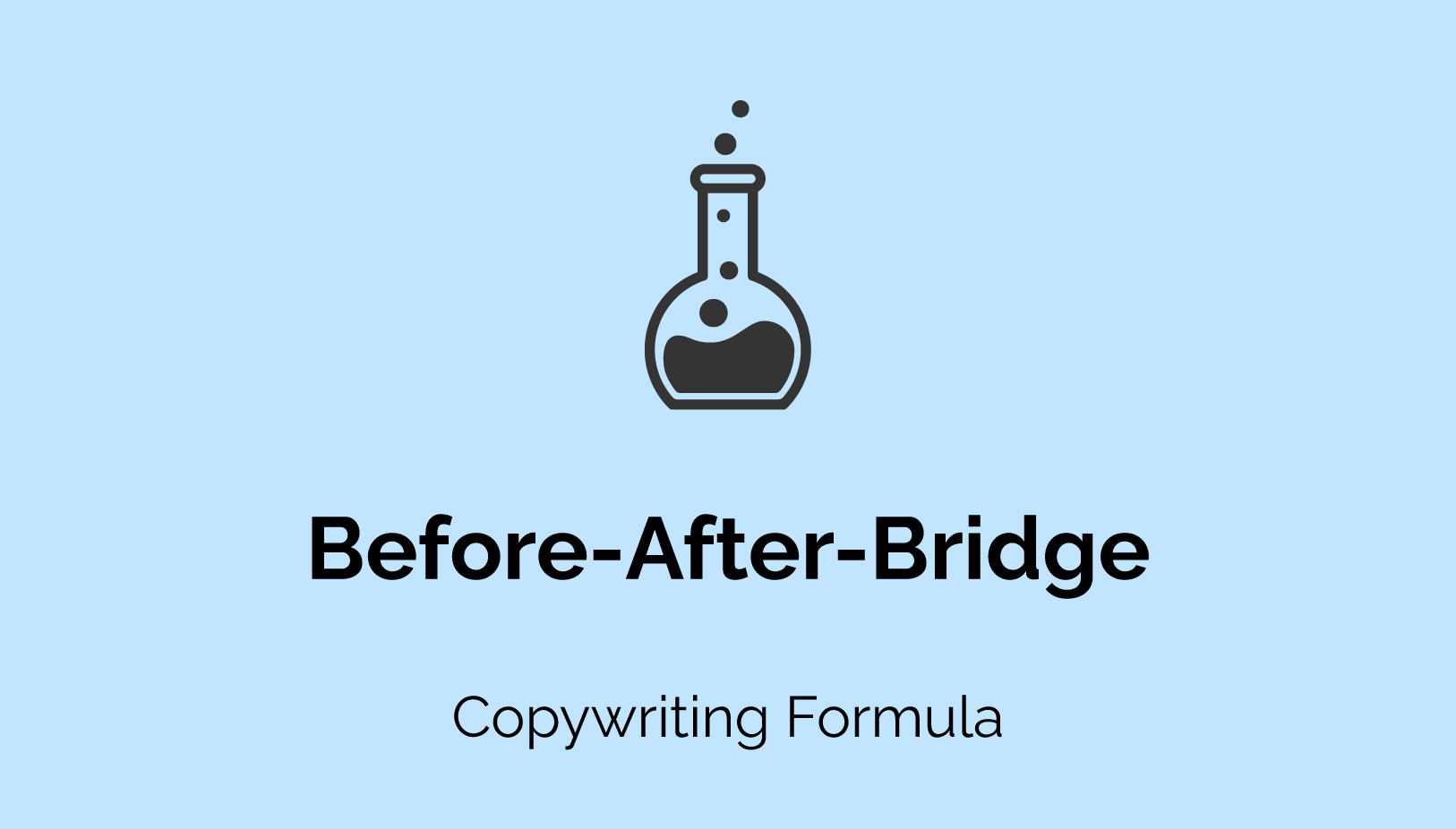We all like happy endings. Fairytale princesses often have them. Unfortunately we, in the real world, are not as fortunate. The primary reason for this is, although we can envisage the ending, we often don’t know how to get there. In copywriting and marketing, a formula exists that shows us the way. The marketing model, Before-After-Bridge, tells a tale and provides the path to a happy ending.
Introduction
The BAB marketing formula begins at square one, telling us the story that we basically all know already – this is your problem… it exists. From there it goes on to paint a picture where your problem has been solved… it no longer exists. Finally, BAB tells you how to move from the “Before” stage to the “After” stage by building a “Bridge” for you to cross in order to get from one stage to the next.
Before
Conversions often occur through persuasion and focusing on human emotion. By detailing scenarios that exist in the real world, we begin building connections with our audiences as we show that we are able to empathize with them and the problems that they’re experiencing.
Before Example
It’s month-end rush hour at the food market. You’ve just been paid and the queues are at the door. It has been a hard day at work. Your migraine is setting in and all you really want to do is get home, slump down on your lounger, put your feet up, drape a damp flannel over your forehead and enjoy a cold one while watching the game. But you can’t as you need to get the shopping done.
After
Via our “Before” example we’ve begun building a rapport with our audience. They realise that they’ve experienced that exact scenario many times before and continue to do so every month. We’ve created a ‘want’ within them to experience a transformation from the stressful, time consuming reality they currently experience. Now we turn that existing ‘want’ into a ‘need’ by offering a solution – an idyllic space where they would love to end up. A more perfect world.
After Example
It’s month end. You negotiate the obligatory traffic and arrive home safely. You’ve a slight headache from the commute but you pop an aspirin and grab a cold one from the fridge before nestling into your longer, put your feet up and click on the telly. Sports time! You receive an sms – the food market delivery is 10 minutes out. Touchdown! The doorbell rings. The delivery man greets you with a smile which you return. He hands over the four bags as detailed after your online order placed at work earlier. You pack everything away, crack another cold one and settle back down to watch the game. Heaven.
Bridge
Our “After” example has created a ‘need’ for our audience. Using emotive words, we’ve been able to contrast the two scenarios in a manner that will encourage a desire in our audience to find out more in order to change their current circumstance into a more fulfilling one. Now is the time to build that bridge showing them how to cross over from the “Before” to the “After”.
It is important to change your tone to a more professional one when detailing the sequence of events that need to take place during the “Bridge” phase. This phase is essentially a step-by-step description of the process required to utilise your product or service correctly.
Bridge Example
You visit the food market website at www.foodmarketzipity.do.da during your lunch break and navigate to the ‘online orders’ tab. You create an account by following the instructions that pop up after clicking the ‘create account’ tab. Once you’ve filled in your particulars and credit card details you save them for future use. You receive a sms from the food market which you reply to, confirming your account creation. Then you click the ‘online product range’ tab and, using the search bar, type in the first product name from the shopping list that you made earlier. Remembering the 2% surcharge on deliveries, you add the found product to your shopping cart. You follow the same process until you’ve added all of the products you need to the cart. On proceeding to click on your shopping cart tab, you check that your items are all there and what they cost. You set your delivery date and time, confirming that the delivery address is correct. Then you click ‘check-out’ and proceed to pay for your goods.
This whole process has taken you about ten minutes. You smile and continue your lunch break, looking forward to the game you can watch when you get home.
Summary
Before-After-Bridge is a widely-used copywriting and marketing model that, when used well, builds an emotional bond with an audience. The use of storytelling, empathy and emotive words are perhaps more common in this formula than in most others, which can result in a greater conversion rate than with many other formulas. Emotional bonds encourage greater sales. Before-After Bridge tells a tale and provides the path to a happy ending. And we all like happy endings.
- Technology and the future of books - July 29, 2021
- The benefits and importance of UX writing - July 29, 2021
- Use the science of music as a tool to enhance creative productivity - July 28, 2021
